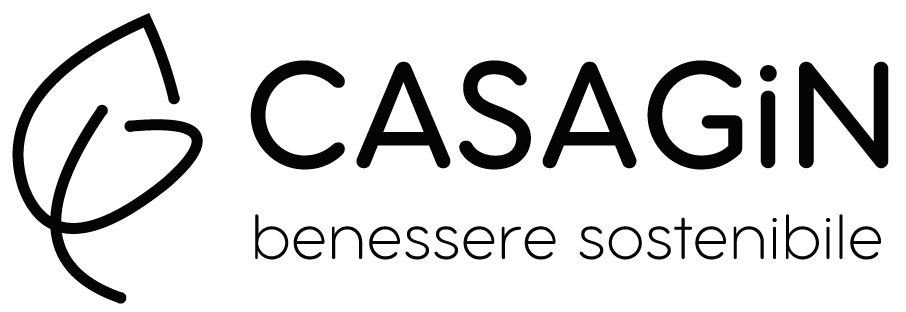
Clothing and recycling:
our choices make the difference
As already mentioned in our Magazine, the clothing sector is one of the most polluting sectors in the world , second only to the oil industry. To give you an idea, the pollution produced by this department represents 10% of global carbon emissions. All this is accentuated by what can be defined as fast fashion . A modern term used by fashion retailers to express a design that moves quickly from the catwalks and influences current fashion trends. Fast fashion is also associated with disposable fashion because it places designer products on the mass market at relatively low prices , produced without respecting the principles of ethics and environmental sustainability. This is why at CasaGIN we consider every step of the production chain to be fundamental: from the choice of innovative and natural materials to the selection of suppliers who follow ethical production processes.
The overall impacts of the fast fashion industry are quite alarming. This relatively new, yet popular trend sees modern clothing companies introducing new lines of clothing at a much higher frequency than the traditional pace, without paying attention to the choice of materials or the conditions of the workers involved in the production of fabrics and garments. All of this attracts consumers because the clothes are much cheaper (due to where and how they are produced). Because the cost of clothing is so cheap, people change clothes more often and are more likely to discard what they don't wear , since they can afford to do so.
It is estimated that each Italian, on average, hampers 10kg of clothes every year, with only 15% of this large amount of textile waste reused or recycled. Furthermore, it must be considered that in the case of recycling, the fabric is not transformed into a new t-shirt or pair of trousers. Currently what happens is that clothes are simply reused as they are or used for other accessory uses , such as rags or other.
However, it must be considered that there is no lack of commitment in this direction and there are numerous attempts to put the fabrics used for clothes and garments back on the market. A research group in Finland has recently developed a recovery technique that recycles cotton and polyester garments by transforming them into fibers similar to Lyocell or Tencel , eco-sustainable materials that at CasaGIN we use to produce our garments. This technique will allow you to recycle your clothes multiple times and prevent huge quantities of fabrics from ending up in landfill every year. Herbert Sixta, from Aalto University in Finland, started research into new tissue recycling techniques and about five years ago, Sixta's team discovered an ionic liquid (liquid salt) that can dissolve cellulose from pulp of wood, producing a material that can be transformed into highly resistant, continuously recyclable textile fibres.

While none of these methods are yet ready for commercial use, these developments highlight the importance and urgency of finding solutions to make the fashion industry more environmentally friendly . In the meantime we like to remember that there are always small gestures that can make the difference:
Reduce : Try reducing the amount of clothing you purchase. If you really need new clothes, look for quality. They will last longer and prevent you from constantly replacing your wardrobe.
Reuse : Shopping at second - hand clothing stores is always a great way to prevent fabrics from ending up in landfill.
Recycle : When it's time to get rid of unwanted or unused clothes, donate them! There are many organizations that offer clothing recycling solutions. It is possible to find yellow bins on the streets specifically used for collecting used clothes. They are then collected by social cooperatives, such as Caritas, and transferred to sorting centers.
Finally, more and more global manufacturers are ready to tackle the problem of waste in the form of clothing. And for this reason there are numerous campaigns to collect used clothes .
H&M, Zara, & Other Stories, North Face, Intimissimi and Oviesse allow, through targeted programs, bags of used clothes of any brand and type to be delivered to their dedicated stores in exchange for a shopping voucher . In many cases, clothes that can still be worn are sold as second-hand items; recoverable fabrics are instead recycled or transformed into textile fibers and reused in various industries and sectors. There are also solidarity shops present in many Italian cities, where it is possible to donate your clothes and have them "purchased", without using money, by those who are less fortunate.
In short, there are many solutions for recovering or disposing of used clothes, shoes, bags and other textile materials, contributing significantly to environmental protection . A dress, if expertly adapted, can have a thousand lives. This is why the focus on the collection of used clothes is increasingly successful and constantly growing. Having started in the United States, the recycling of clothes and fabrics is slowly spreading to Italy too. But it is necessary not to focus on a single solution and to pay increasingly more attention to our purchasing habits . By choosing natural and eco-sustainable products, created ethically, you can make a big difference in a sector like fashion, which is fundamental in our daily lives! Our choices have made a difference in the past, and will make a difference in the future .


